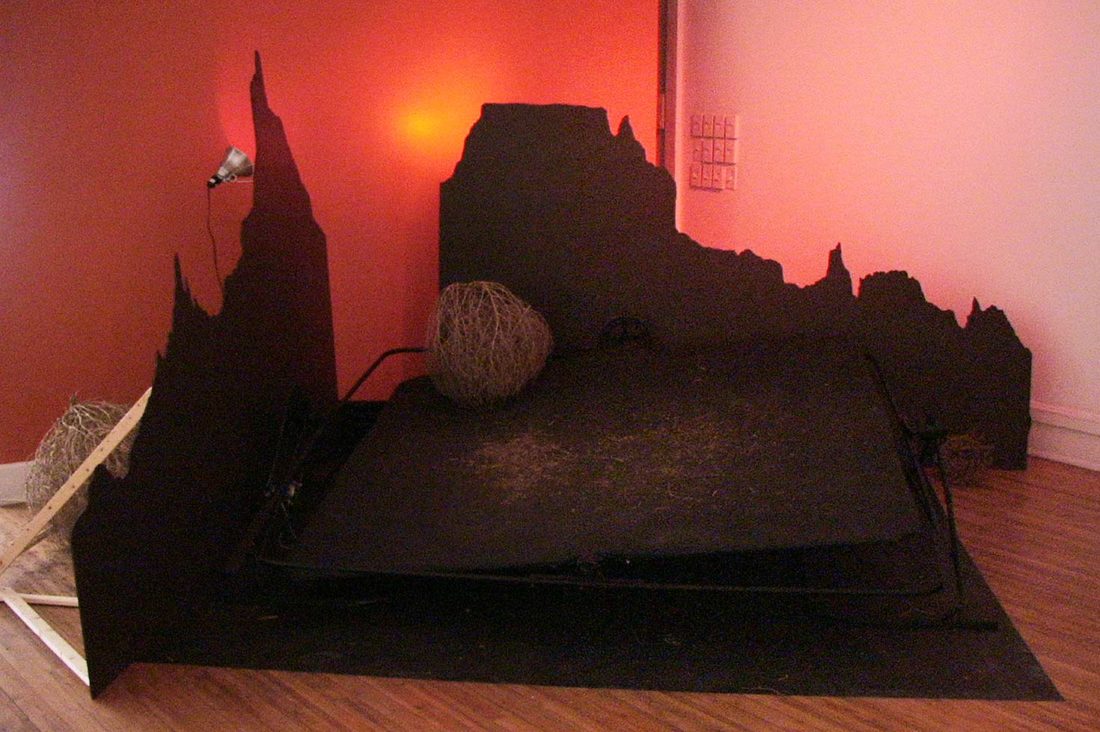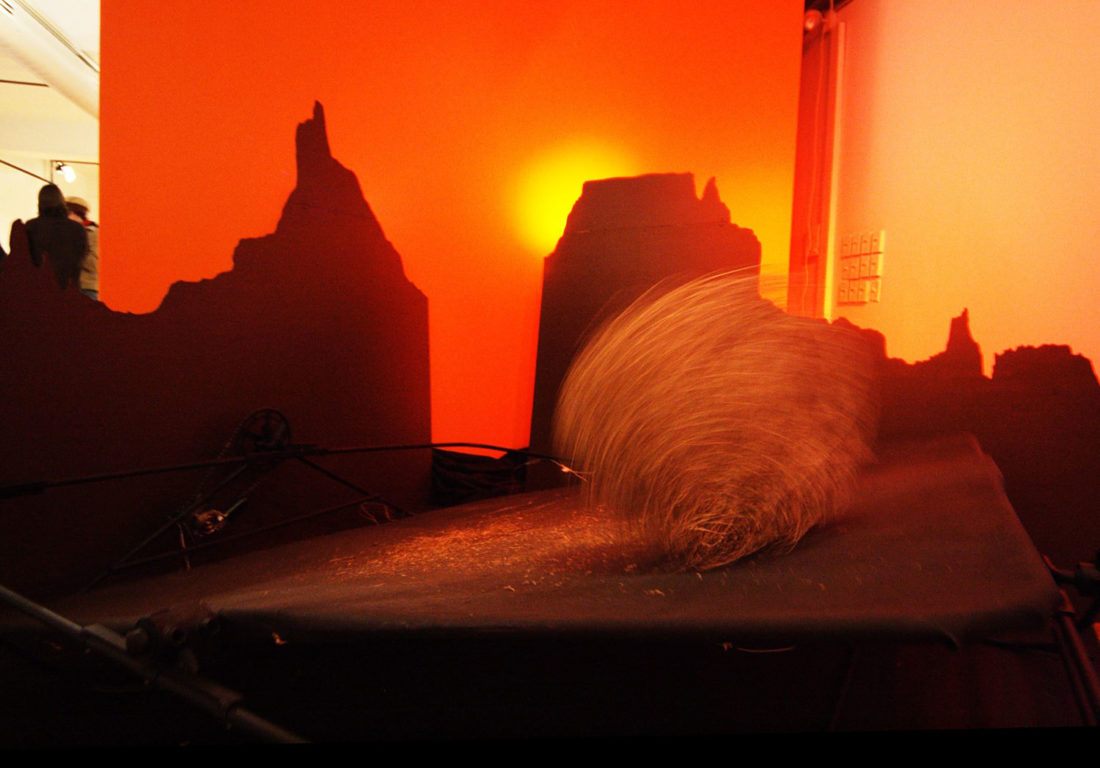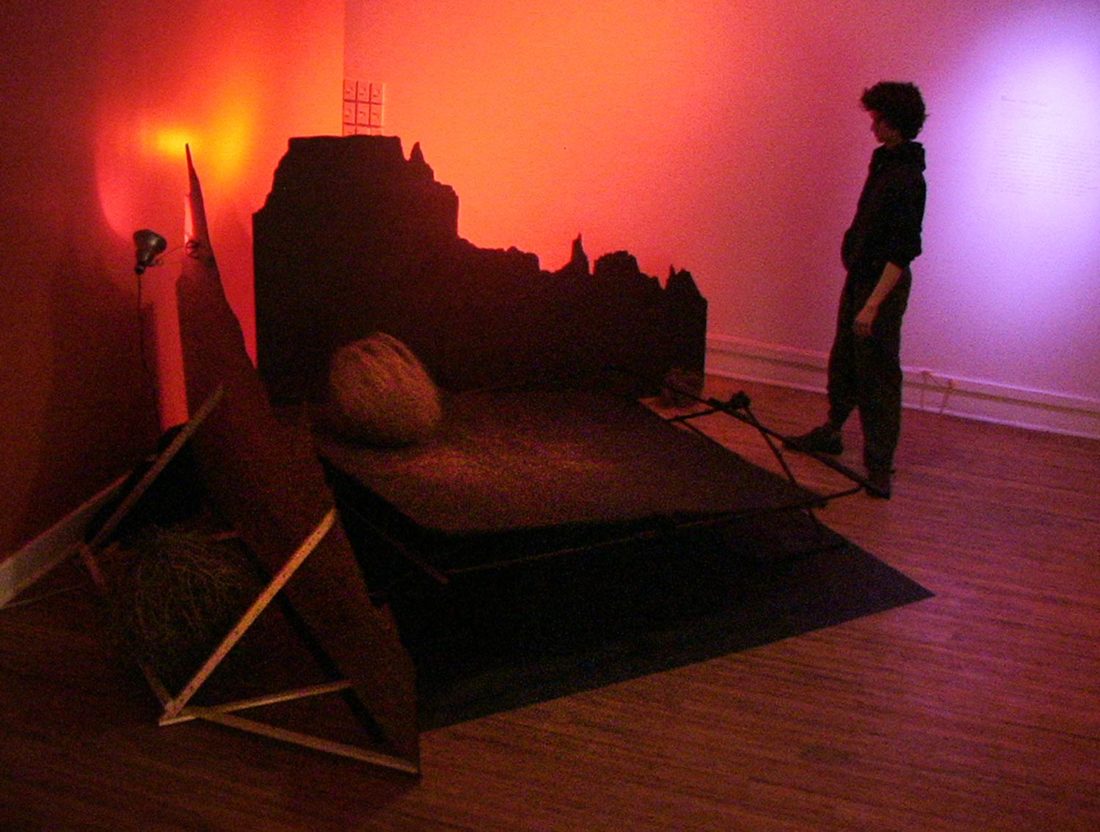Welcome Home, Pioneer
(w/ Stuart O. Anderson)
surplus motors, recycled bicycle drive trains, scrap aluminum, borrowed electronics, tumbleweed
2007
Tumbleweeds, as we know them, were first reported in 1877 in South Dakota – the seeds having been accidentally introduced alongside flax seeds by Ukrainian immigrant farmers. Within twenty years the plant had spread West to the Pacific Coast. Also known commonly as Russian Thistle, the US Department of Agriculture lists the plant as a “noxious weed” – it is a classic example of an invasive species. Depicted in Hollywood Westerns as a symbol of a desolate landscape, the rise of the tumbleweed in North America was facilitated by the spread of single-crop agriculture. As colonial pioneers cleared out the original prairie grass, they unwittingly helped to create an environment uniquely suited to the plant’s reproductive strategy. When it’s seeds reach maturity, a special layer of cells close to the base of the plant dries up. The small bush can then break from it’s deep taproot and roll across the landscape, pushed by the wind. As it tumbles, a plant of average size disperses up to a quarter million seeds from it’s dried branches.
In this kinetic sculpture, a tumbleweed rolls perpetually on a gimble-mounted platform built from conduit and bicycle drivetrains. An infrared camera and custom software track the plant and keep it in motion indefinitely.
Welcome Home, Pioneer was presented in the first exhibition of the Rossum’s robotic arts group in Pittsburgh, and was juror nominated for the Hybrid Arts category of the Prix Ars Electronica 2007.
Date
2007
Category
Sculpture & Installation





